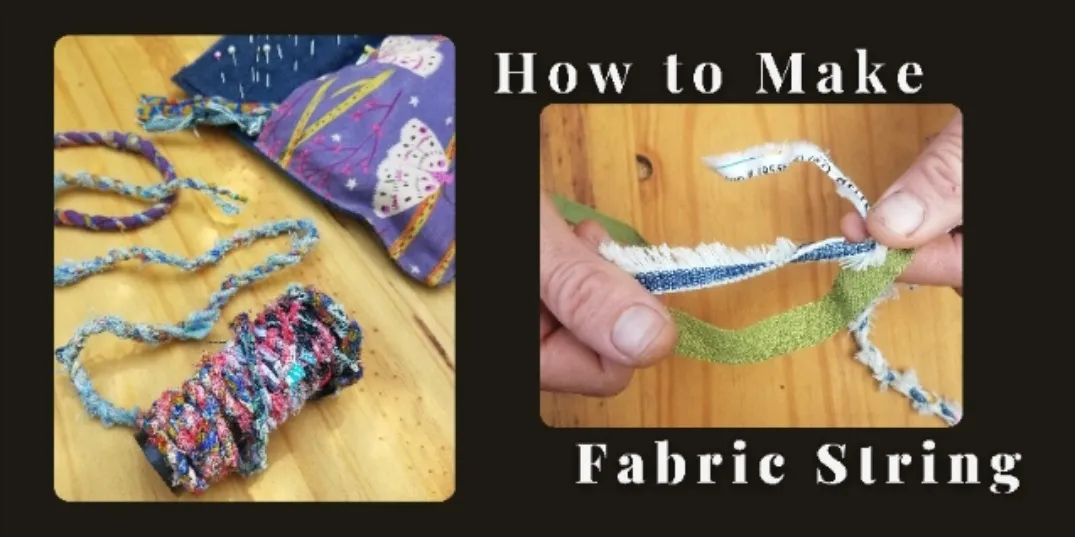
Anyone who sews or recycles clothing surely has a big pile of scraps waiting for some future project. Personally, I have two baskets of such fabric and much of the continents are thin scraps that are hard to up-cycle into clothing.
Luckily, there is a fun and easy way to recycle such left over materials by transforming them into fabric string, also called twine. But, in order for the string to be resistant and not immediately fall apart, two strands must be twisted against each other, much like DNA!
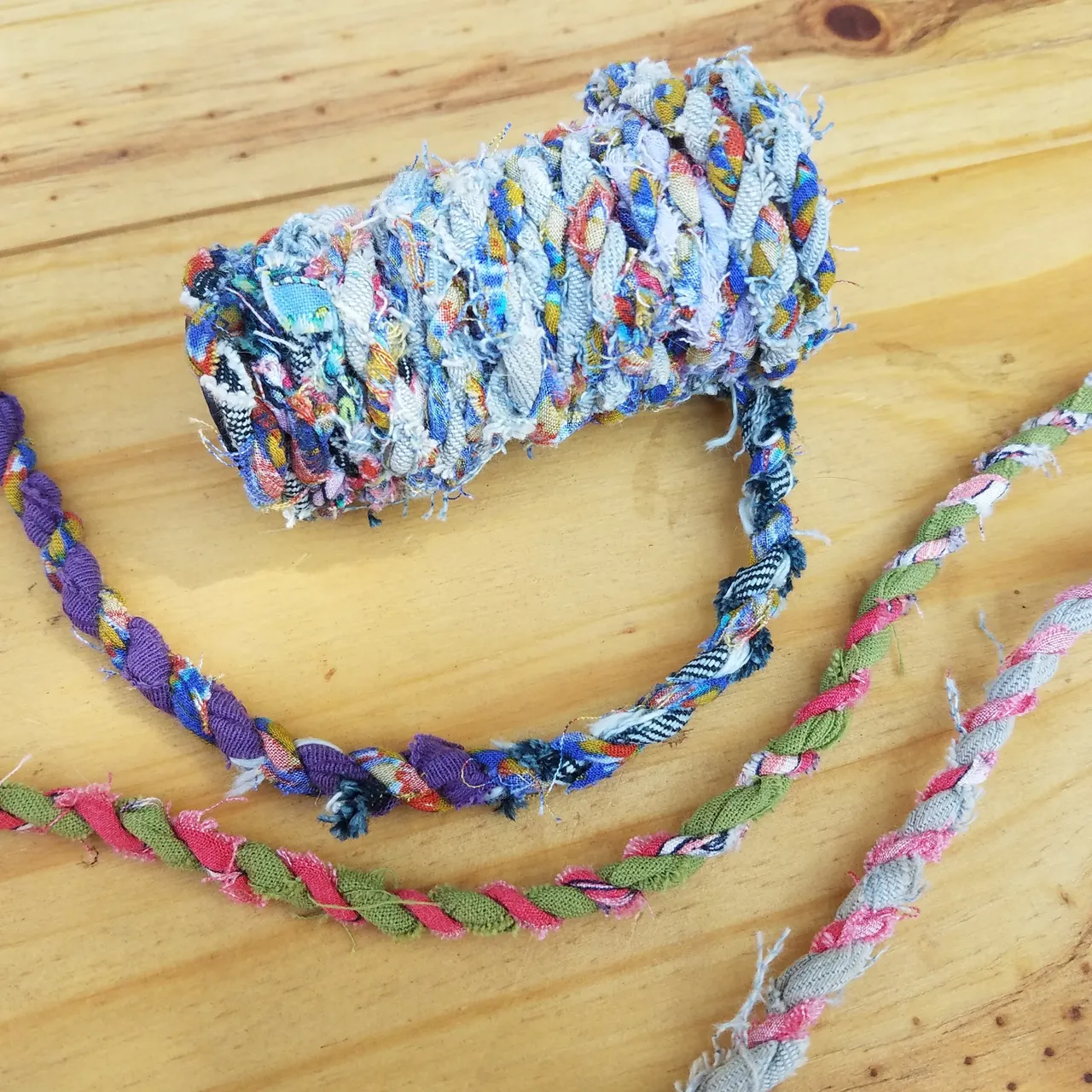
In this short tutorial I will be explaining how you can make your own fabric string with words and photos of myself actually making the craft. First, we must begin by separating out the fabrics to be used and cutting them into thin strips, about 1 inch / 2.5 cm in width.
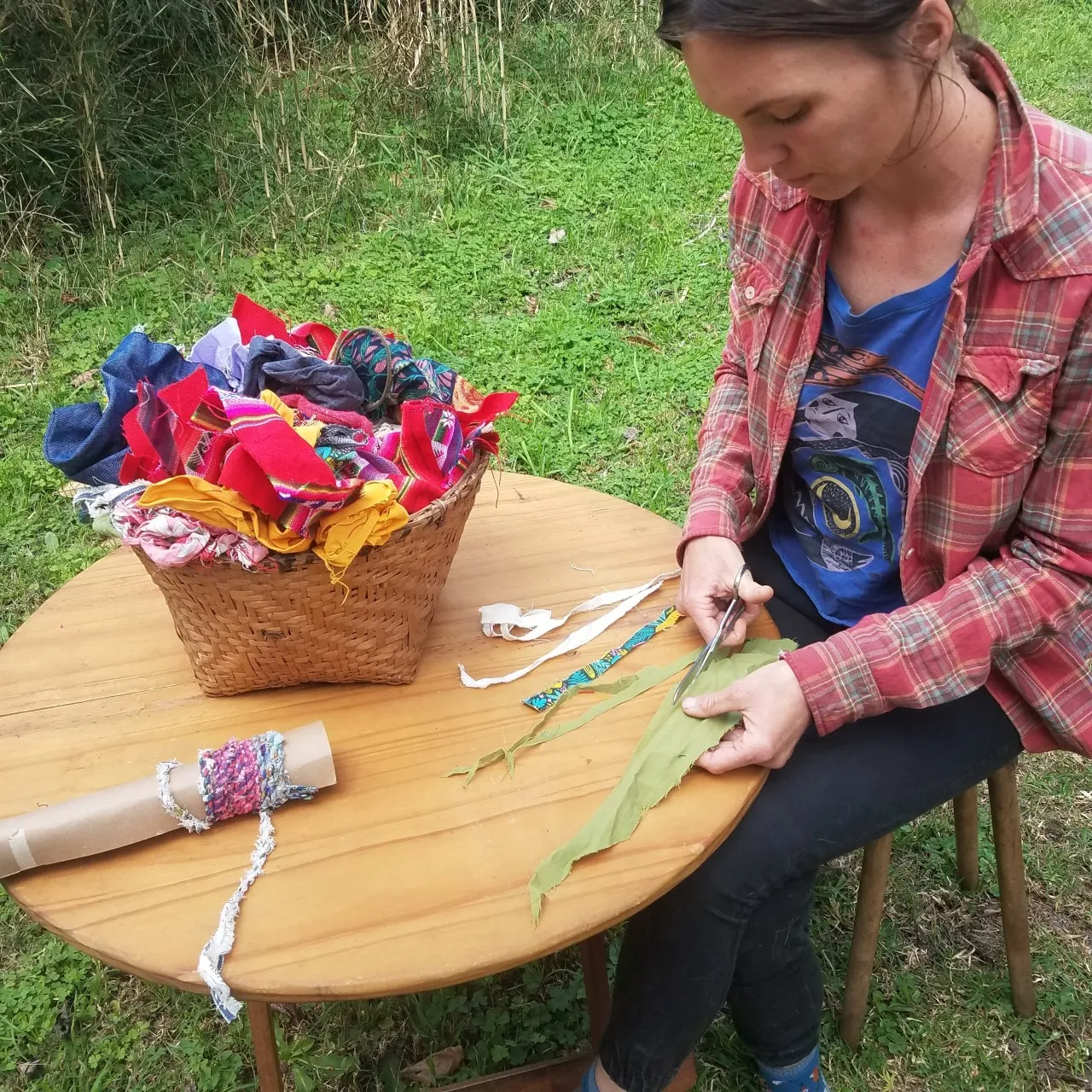
Now comes the actual twisting of the fabric. This part is a bit hard to explain, so I have included many pictures of me making the string to illustrate. I promise it is easier to do than explain in words. To start, tie together two sections of fabric with your left hand and begin twisting one of the sections away from you:
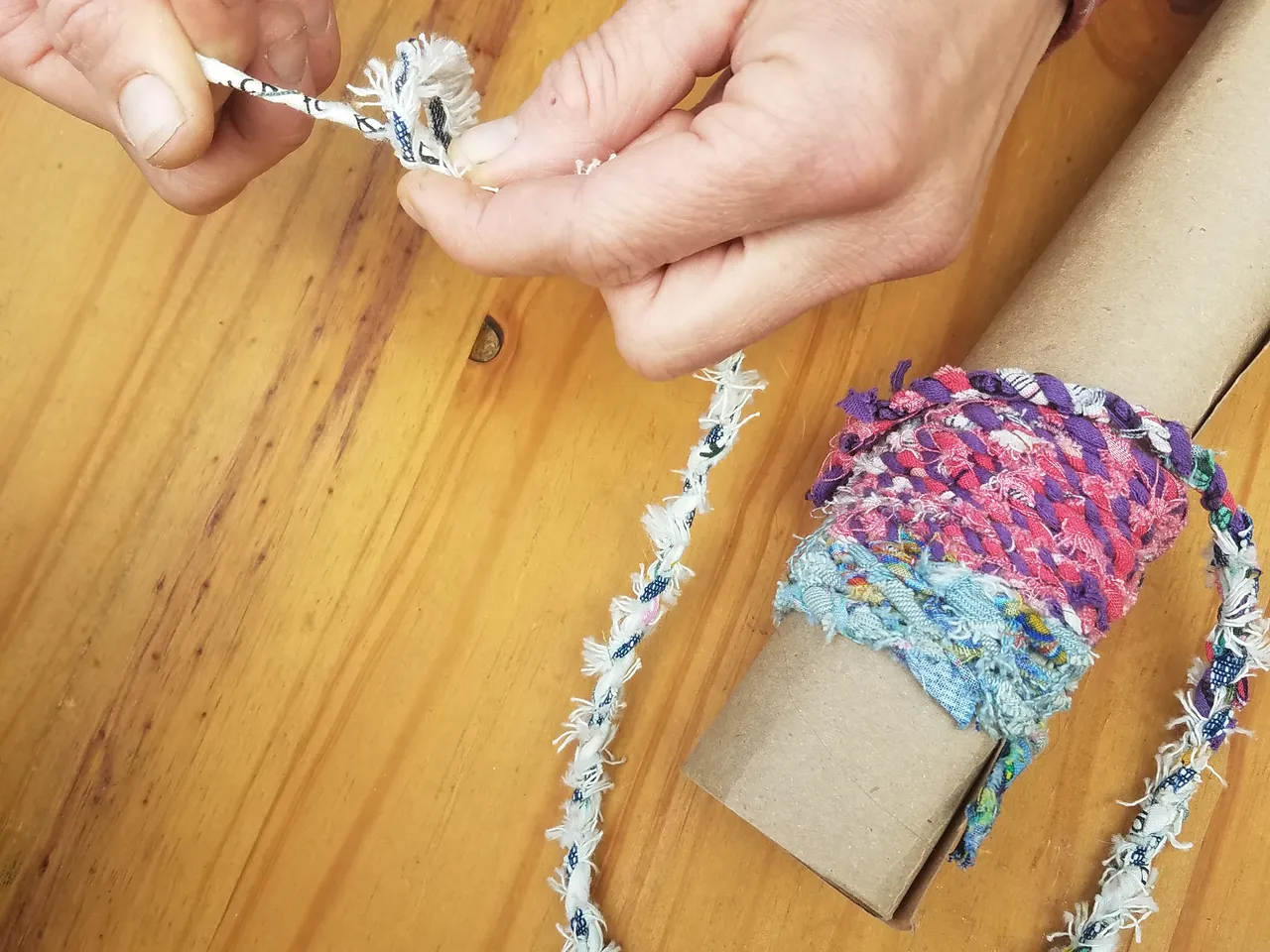
Then, with the piece of fabric all twisted up, take that piece (which in this photo is the white fabric) and bring it over the other piece, towards you:
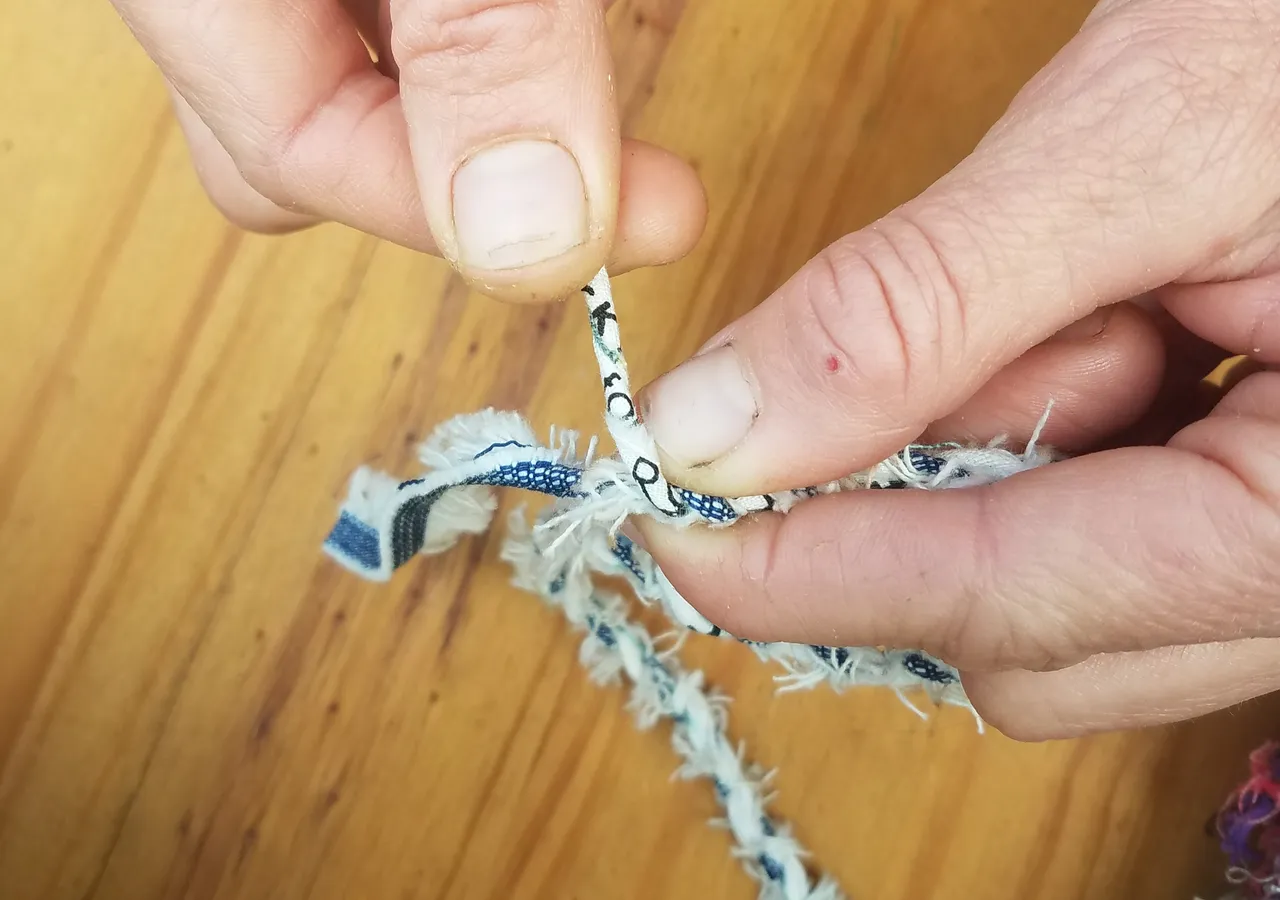
And then ... repeat!! Making string is as simple as taking one strand, twisting it one direction, then bringing it over the other strand in the opposite direction. Then, taking the other strand, twisting it away from you, followed by bringing it over the other the other strand ... and over and over again.
I hope this is making sense. As I write this I struggle to find adequate words and thus, asked my partner to take many pictures of me twisting and bringing over to help illustrate how it is done, and how easy it is to do.
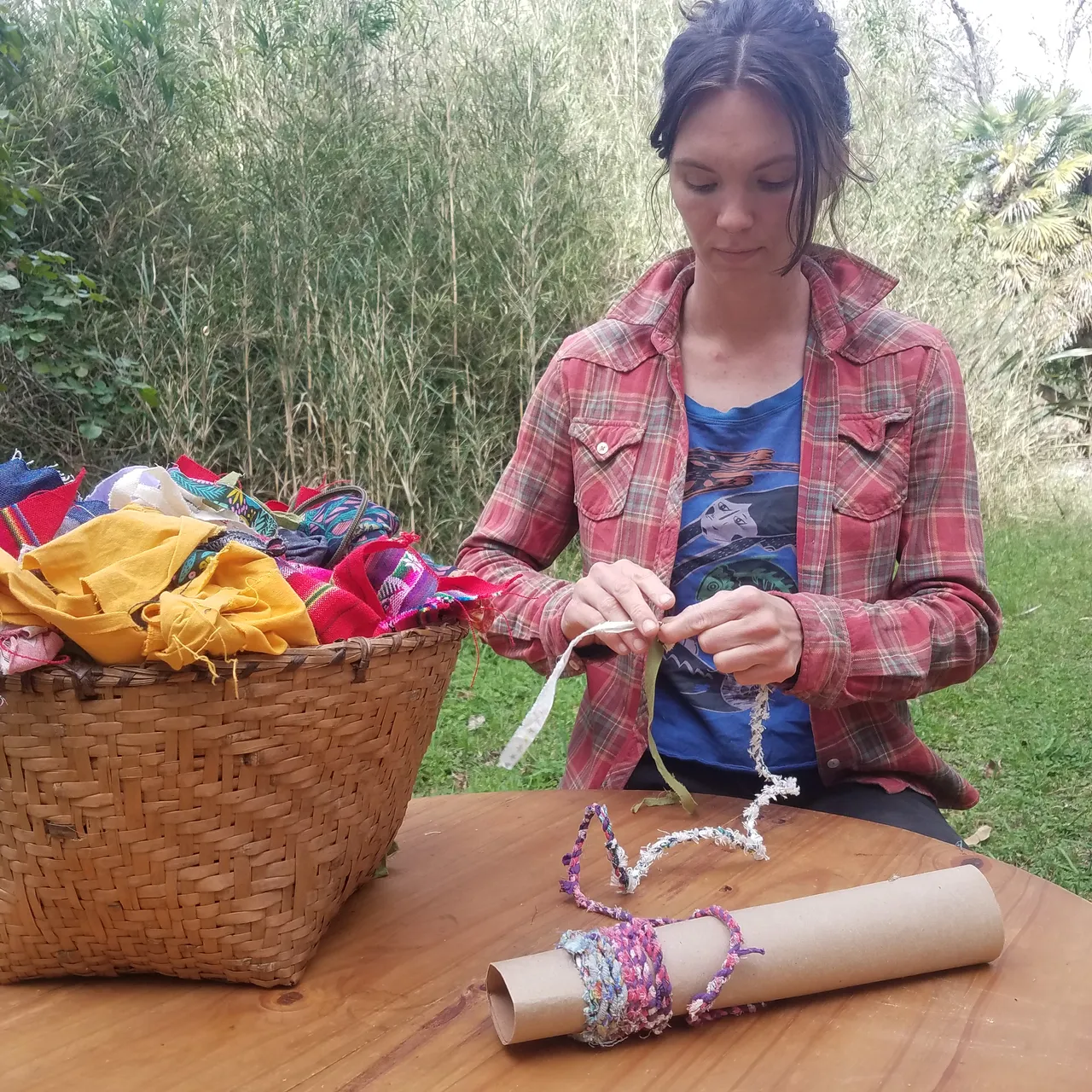
After a few rounds of twisting and bringing over you will eventually need to add more fabric to the strands. In order to make the string strong I recommend that you add to each strand at different points. To do so, simply overlap the new strand and the original strand:
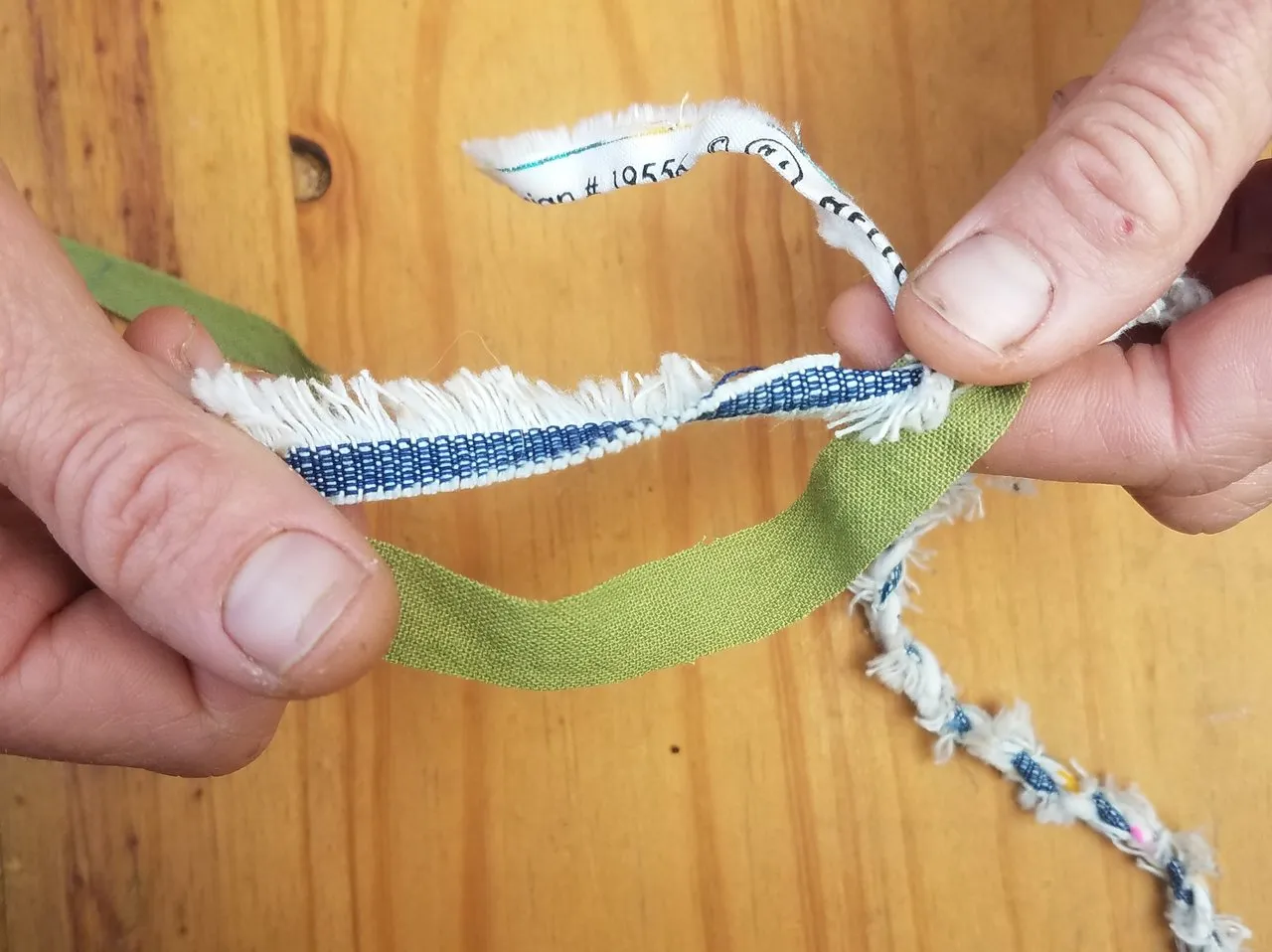
Including the new strand with the original, keep twisting and bringing over:
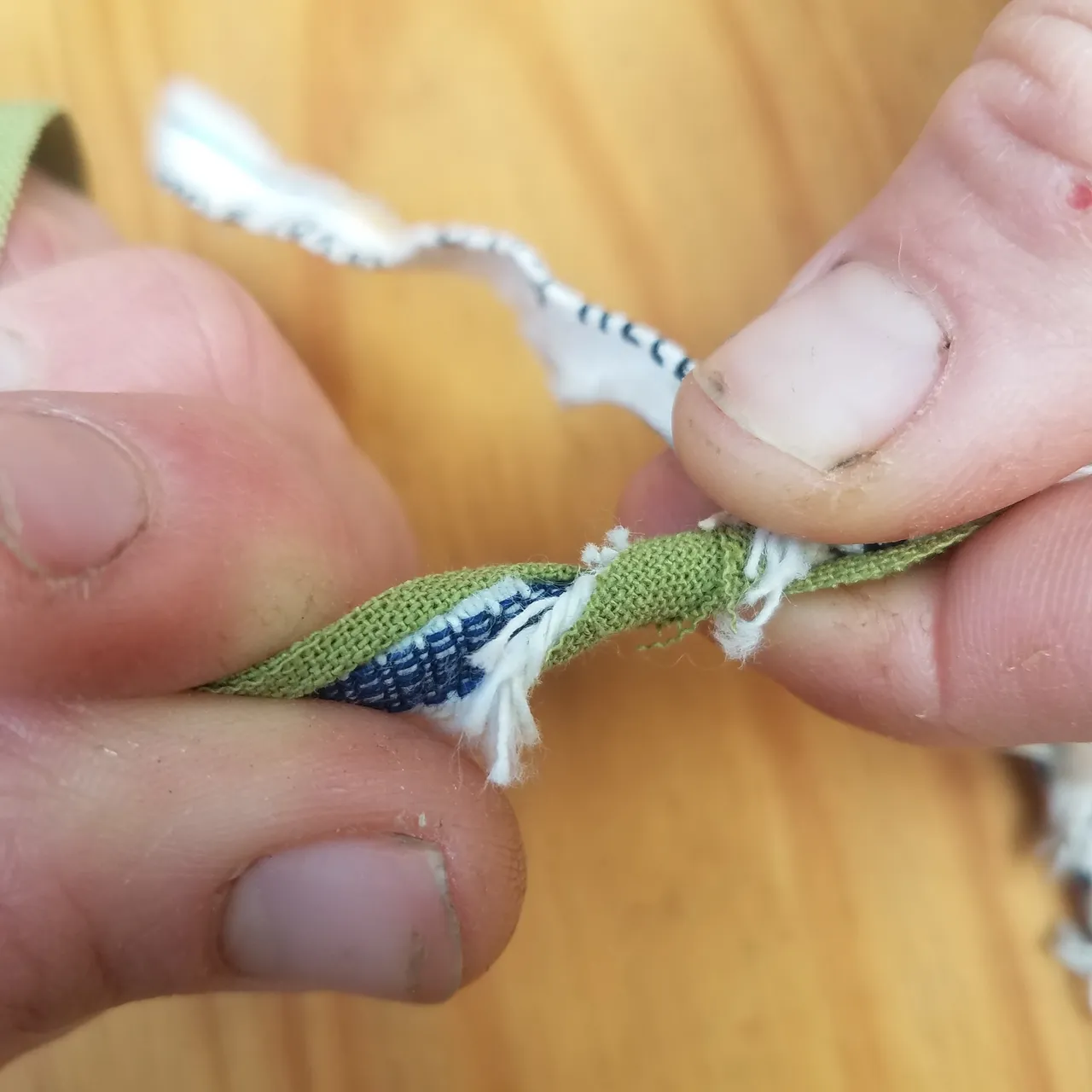
I find it is best that the new and old strand overlap several inches in order for there to be no weak points in the string.
This is the kind of activity that is great for doing while listening to a long talk or podcast, or while sitting by the fire on a cold night. Once you get the hang of spinning, you can even carry on conversations while making this up-cycled craft!

You may be wonder how you can actually use this string. Personally I use it for all kinds of things, from draw strings on fabric bags, to twine for wrapping presents (with recycled paper, of course). I even use it instead of string lights to decorate my Christmas tree (which is actually a rosemary plant). The uses are endless and up to your own creativity!
